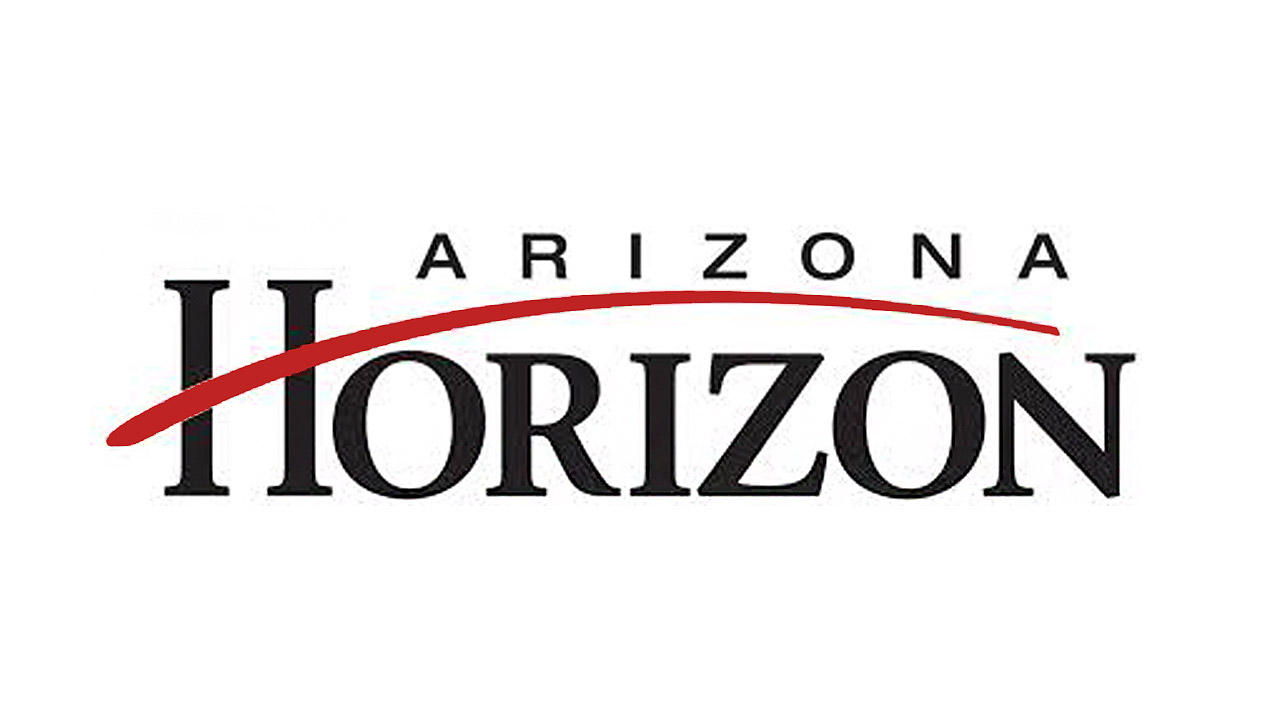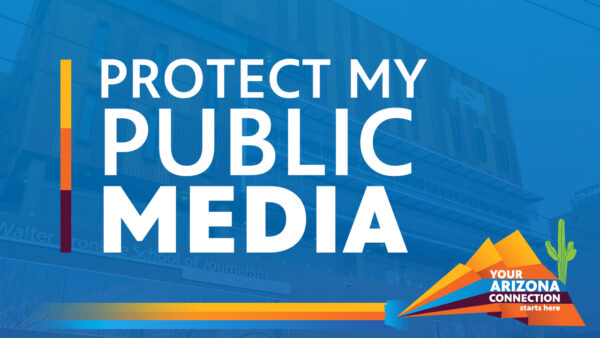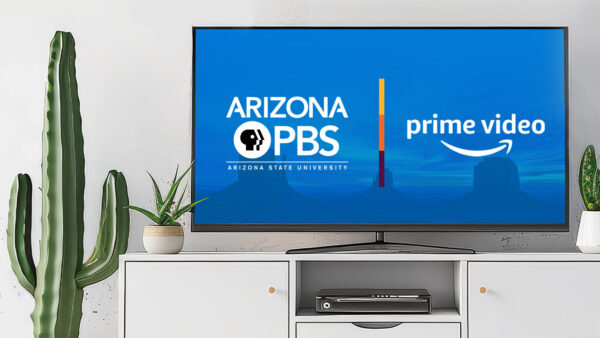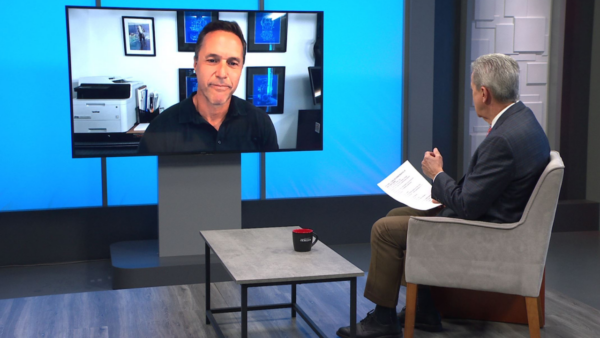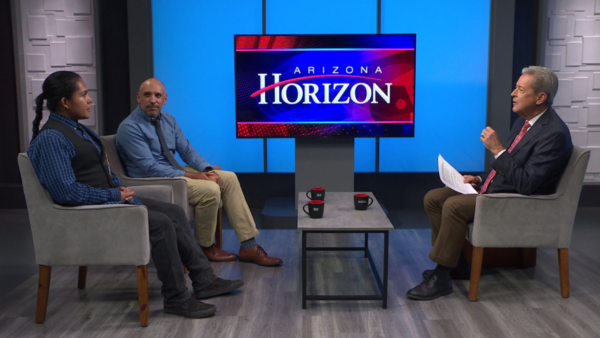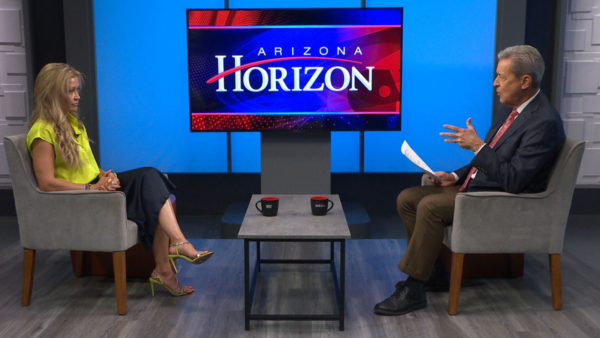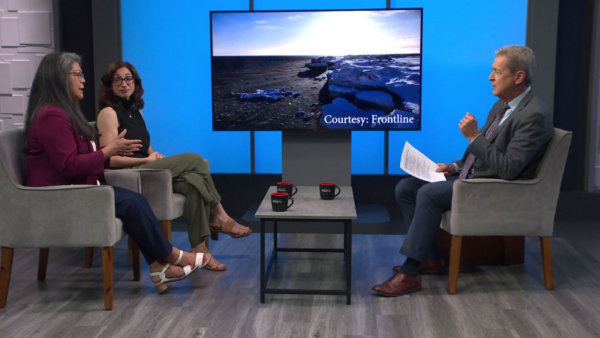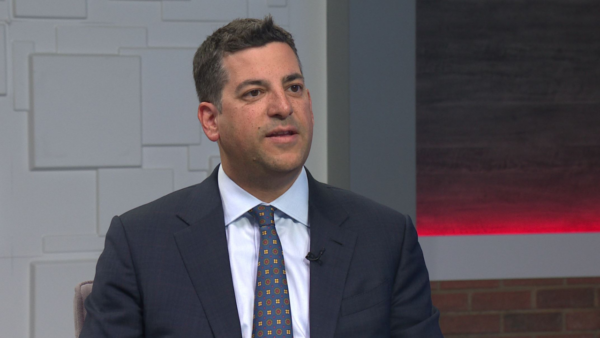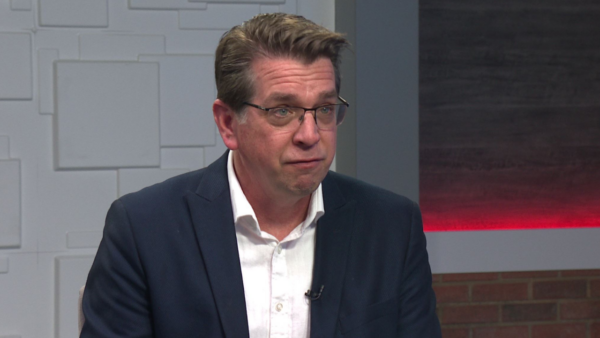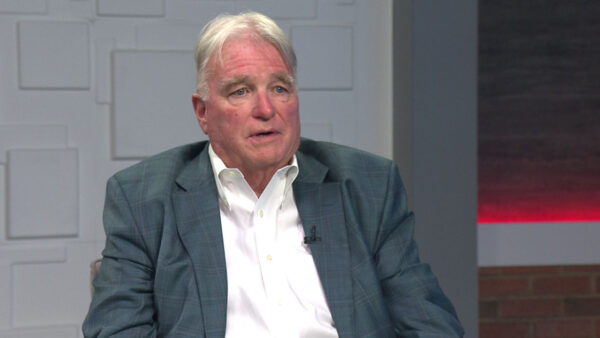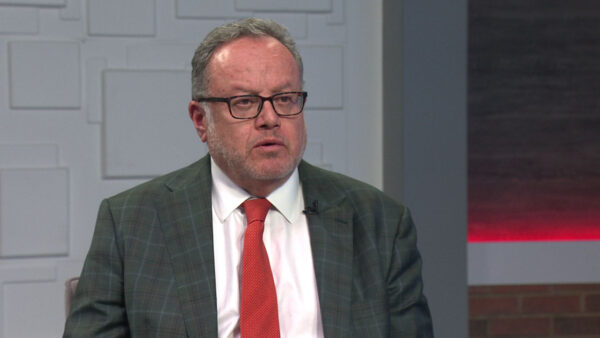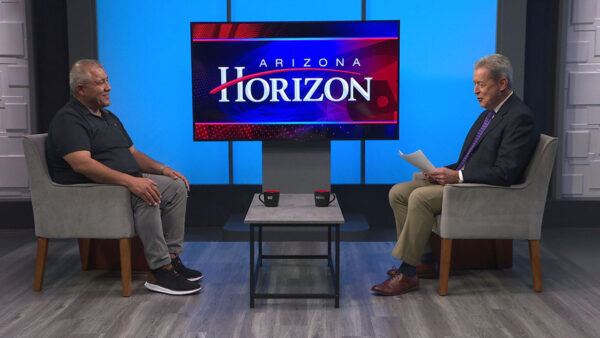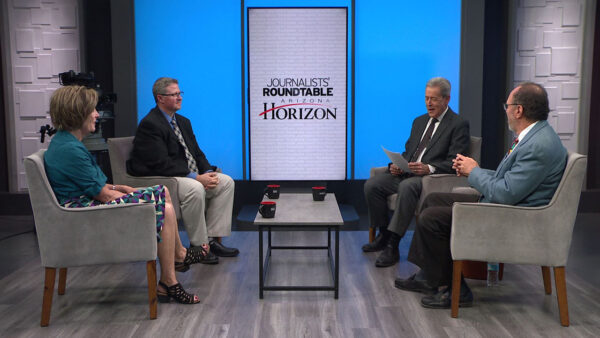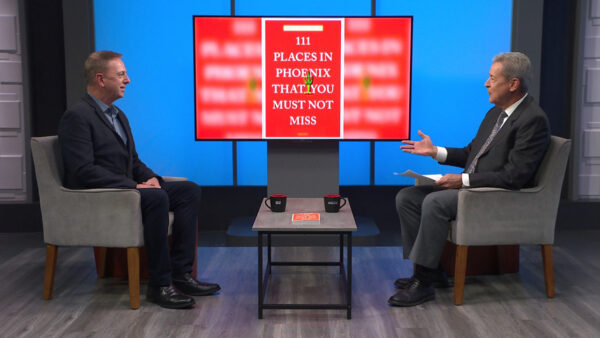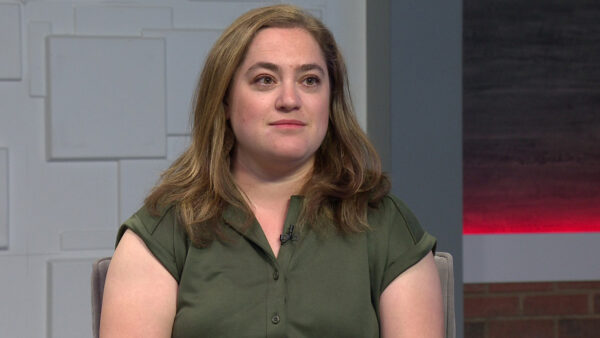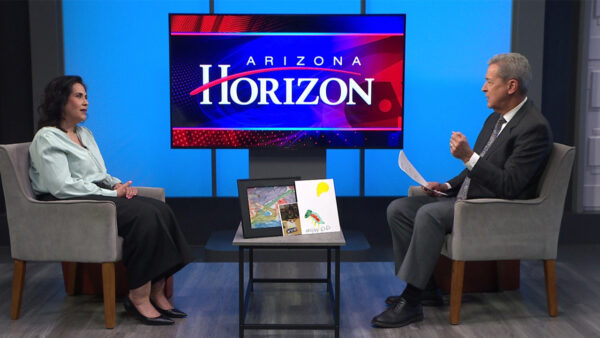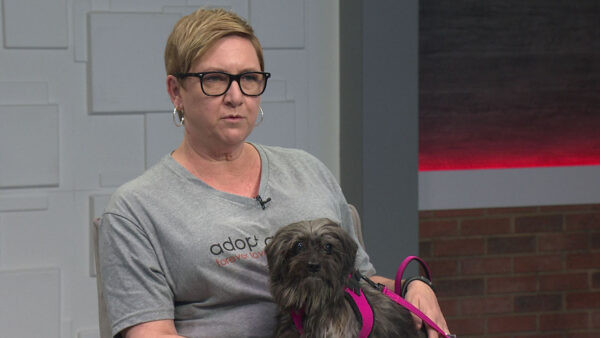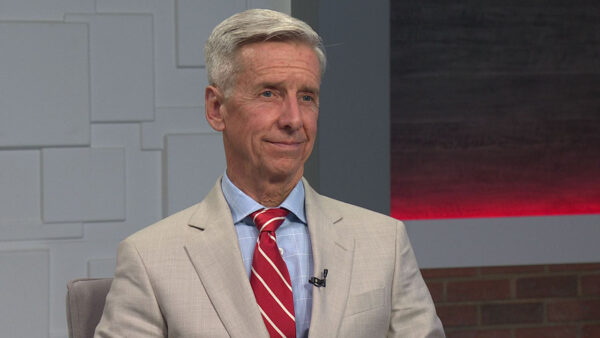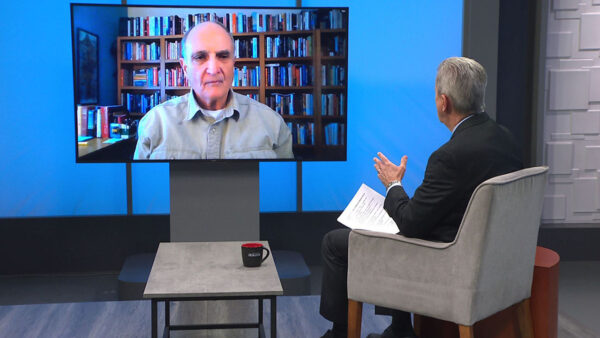Part three
For more than 20 years Arizona has been one of the leading states in research and development of solar power. How does it work? And how accessible is it to consumers? A solar energy consumer helps us understand the importance of the technology.
Cary Pfeffer:
Tonight on Horizon. A federal court judge says the legislature's proposed $32 million school funding plan is insufficient. What does this mean for the English Language Learners program, the legislature, and will the penalties continue to mount again? We'll talk with a local columnist following this story. Then…emergency preparedness. Is Arizona capable of handling a major crisis? We'll show you what area hospitals; law enforcement and emergency teams are doing to stay a step ahead of a possible valley disaster. And we continue our weeklong series on Arizona's energy. Tonight we explore solar power. To talk about it, we see it, but how much do we really know about this alternative technology? Experts will tell us if this is an answer to our power problem. All this next on Horizon.
Announcer:
Horizon is made possible by contributions from the friends of eight, members of your Arizona PBS station. Thank you.
Cary Pfeffer:
Good evening. I'm Cary Pfeffer, filling in tonight for Michael Grant. Today a federal judge rejected the legislature's education funding plan, ruling it inadequate. The proposed law was submitted as part of a court order to improve Arizona school's English Language Learners program, which would have allocated $32 million to Arizona schools next year. U.S. district court judge Raner Collins ruled that the plan does not appropriate funded E.L.L. program. Here to talk about this ruling is Richard Ruelas, columnist for the "Arizona Republic." Richard, thanks very much for being here.
Richard Ruelas:
Thank you.
Cary Pfeffer:
If you want a full employment act for a journalist out there you start covering this issue because it is ongoing and obviously another chapter.
Richard Ruelas:
I was going to say it's a packed show. How long have we got? This gets complicated rather quickly. The judge issued this ruling on a plan that the legislature passed last session saying it doesn't fit the order. The order dates back to about 2000 when people like Lisa Gram Keegan and Janet Napolitano was attorney general. The state signed a consent order saying, all right. You caught us. We don't fund these programs adequately. Now there's some discussion we shouldn't have gotten into that agreement. But we did agree we're not doing this correctly. So we've now had six years. The judge said in that original order I told you-- or another judge at the time-- the judge says, the order was, you have to figure out how much it costs to teach these students English and then fund it. Well, his problem with the plan is that not only did he find that the money might be inadequate at 74 bucks but he found that it's not tied to anything. There's been no study that says, we've arrived at this $74 figure because we've done this study and here's what this school does. Now, the legislature says, well, the law that is in place and was allowed to become law by the governor is still going. So here's our plan. We are now going to keep going, figuring out how much it costs to teach these students. Once we've figured that out we will fund it. Now, the judge's ruling says it's a bad law but the law still exists. And he also didn't like a part where if you are a school district you have to figure out money that was federally given to you to deal with poverty, impoverished students, you have to take that out and spend it on English Learners. He found that to be illegal.
Cary Pfeffer:
Right. What happens from here? Obviously we have these fines that continue to mount.
Richard Ruelas:
Well, that's a good question. Nothing is easy here. Tim Hogan who brought the suit on behalf of a Nogales student who is now through high school, he says it does-- can go on because the judge's ruling didn't apply to this and the law is still bad so the fines condition. The state says, no, the ninth Circuit Court of Appeals, which overturned his ruling, just overturned the whole thing. Hogan said that the ruling just applied to the distribution of funds to schools not the whole thing so someone is going to have to sake a clarification on this.
Cary Pfeffer:
Will they reconvene this entire process, then?
Richard Ruelas:
No, they won't. The legislature says it's adequate it's going to keep going and so until the summer when we have a court of appeals hearing someone will tell us.
Cary Pfeffer:
Thank you very much, Richard. Appreciate it.
Richard Ruelas:
Thank you.
Cary Pfeffer:
In an unprecedented campaign to prepare emergency response organizations for potential disaster, participants have been holding a drill all week. The coyote crisis campaign brings together the response efforts of the general dynamics, the city of Scottsdale healthcare, the Arizona national guard-- here at Papago Park a modern day mash medical field hospital has been set up to receive victims of the disaster. This actual hospital was part of the hurricane Katrina response in Louisiana. The facility includes comprehensive, emergency care services that could treat victims of a disaster or a battlefield. One of the most important reasons for this type of drill is to improve communication.
Col. Brett Wyrick:
Whether it's a terrorist attack or whether it's a natural disaster, of course all the states in the west, California with the earthquakes, Hawaii with their volcanoes, tidal waves, tsunami and also with the hurricane season, everybody has to be on the same page when it comes to an emergency response like this. And part of what we're doing here is making sure that we all speak the same language. That when we say we need x number of litters, that they're the same kind of litters that they interoperate and this gives our commanding patrol unit an opportunity to say, how do we contact these people? What are the contact points? Who needs to be notified? Recalls, mobilization procedures and orders to get the people there fast enough, to be effective when they arrive.
Cary Pfeffer:
This brings together the international guard from Hawaii, California and Arizona. The drill continues through the week. And joining us now to give an overview of the Coyote Crisis campaign, the director of Marine Corps programs at General Dynamics, Mike Fallon. Mike thanks for being here.
Mike Fallon:
Thank you, Cary.
Cary Pfeffer:
We talked a little bit in the interview we just heard. But there's more than just communication. This is about preparedness on a lot of different levels.
Mike Fallon:
Absolutely. It's about community safety. It's about disaster training and it's about effective disaster coordination between the five institutions, which make it unique.
Cary Pfeffer:
And the five institutions all sort of come together. This isn't something that you're able to do at a week's notice. You try to put something like this into place over I would assume a months' long period of time before this week actually occurs.
Mike Fallon:
You're absolutely right, Cary. 12 months worth of planning. And we learn from the planning together. The institutions, Arizona State University deeply involved. Private healthcare, the hospitals in the community.
Cary Pfeffer:
Right.
Mike Fallon:
The National Guard, which you highlighted and we just saw the good colonel out of Hawaii. Private industry and then the government. Those are the horizontal cross institution challenges that we all face.
Cary Pfeffer:
And when you're in this kind of a situation, for example, today is Wednesday. Any insights so far into the process?
Mike Fallon:
This is a bottoms up, grass roots. We have a review process. Our first hot washup, as we say, will be this Friday. It will be premature for me to speculate at this point.
Cary Pfeffer:
Certainly when Katrina happens or other big natural disasters, earthquake, tornados, those kinds of things that brings it to mind. We don't have some of those things thankfully right here in Arizona but we still need to be prepared.
Mike Fallon:
We need to be prepared. We have natural disasters every season. As you know we have forest fires that touch our community. So we also have units that deploy to other locations. This medical unit that you featured deployed the facilities out of Michigan to Louisiana. The surgeons, some of them, right out of the valley of the sun.
Cary Pfeffer:
Wow. So looking ahead, is this something that-- like you said you sit down on Friday and try to do a review, but the plan is for some long-term lessons as well.
Mike Fallon:
Long-term lessons. And in fact, Coyote '07 planning starts this week.
Cary Pfeffer:
All right. Thanks very much, Mike Fallon, for your good work there and continued success during the rest of this week.
Mike Fallon:
Thank you.
Cary Pfeffer:
You bet. Now we continue our series on power hungry, a look at Arizona's energy. Tonight we explore renewable energy as we focus on solar power. For decades this technology has been a topic of discussion among experts across the country and of course here in Arizona. Local power companies say several hundred energy consumers produce their own electricity through a solar power program. And Nadine Arroyo tells us this new technology may be one answer to our energy dilemma.
Nadine Arroyo:
The sun. Can't live with it, certainly can't live without it. But as we become more conscious of environmental problems, we're realizing that maybe, just maybe, the sun can help us much more than we think. At a time of rising energy costs, the sun has become the alternative solution to our environmental problems and energy-saving dilemma. Slowly more and more energy consumers are using solar energy in place of traditional electricity. And many, like Chuck Skidmore, say this modern technology is a great alternative of producing power.
Chuck Skidmore:
I recognize the importance of doing this sort of thing because we're running out of fossil fuel. So this is something we need to do.
Nadine Arroyo:
Skidmore is an energy management engineer in Scottsdale. And although he knows much about the subject, his decision to explore this new technology opened his eyes to more than he had imagined.
Chuck Skidmore:
I also wanted to get practical experience with what does a bill look like, what kind of output can I expect, how does the cloudiness impact it on a real personal and practical level. And also how much would it take to run the house. People always ask, how much do I need? So I started with a basic approximately 1-kilowatt system and I've kind of learned from that. Okay. Here's what the house uses. Here's what this produces.
Nadine Arroyo:
Local experts in Arizona have studied solar energy for more than 20-years. Nationally experts have found that Arizona is the ideal location for such a program. With more than 300-days of constant sunlight and little precipitation, the sun can provide us with enough light to generate at least 8 hours of converted electricity on any given day.
Dr. Peter Johnston:
The whole point of solar energy is that we can get electricity from it when the sun is shining. We have on the surface of the earth maybe about 100 watts per square foot of power coming from the sun. And we don't want to interfere with that. That's the distance between the sun and the earth and the size of the sun. We shouldn't play with that at all. And likewise with the time of the number of hours during the day that the sun shines. That's just nature. But after 9:00 in the morning the sun is high enough to produce enough energy that we can use, and then maybe until 4 or 5:00 in the summer. That's the length of time that we can utilize that solar energy.
Nadine Arroyo:
In Tempe, Arizona public service oversees the Solar Test and Research center, better known as STAR. This is one of several Arizona facilities throughout the valley where tests are conducted and technology developed for converting solar energy into electricity.
Dr. Peter Johnston:
Every technology here is based on the direct conversion of sunlight to electricity. And we have a number of different technologies actually on sun here today. We have the conventional flat plate photo voltage panels and the high concentration technology where we actually harvest the sunlights with either plastic lenses or mirrors and concentrate the sun's energy on to very highly efficient electricity converters. The typical solar cell and the flat plate technology here might convert about 14% of the sun's energy to electricity. Our high efficiency cells can produce-- can convert maybe 22%. And we actually have some state-of-the-art cells that are normally associated with space travel now that can convert 35% of the sun's energy to electricity.
Nadine Arroyo:
There are a have right of solar energy panels or photo voltage models. The varying styles mean they have gone through a manufacturing process. The crystallized version can convert more of the sun's energy into electricity versus the thin filled.
Dr. Peter Johnston:
If you're going to put a solar cell on your rooftop, then either the polycrystal or singular crystals will work the best for you. And a lot depends on the availability of these modules today.
Nadine Arroyo:
In one of the most important rules to installing a solar panel is location, location, location. Chuck soon learned that the little things with a solar energy system do matter.
Chuck Skidmore:
I deliberately had it put down on the ground because I wanted to bring people and let them touch, feel, that kind of thing. But we watched the output for the first year and a half and realized that the trees behind us grew. And we were losing output. And in the wintertime the low sun angle, trees on the west half, we were losing a good half of our energy. So about a year ago, I think it was, we moved this up. We had an immediate increase in energy. It's a considerable increase in energy.
Nadine Arroyo:
Utilizing the system is really not all that difficult to understand. It's attached to a high voltage dc, a safety switch box. Then it goes through the solar panel box, which converts dc to ac. Then through meters to track the amount of energy used, and finally it back feeds into the breaker box for electricity use.
Chuck Skidmore:
This is a remote display from the inverter. You notice that it has an antenna here. It tells us how much power this thing is putting out. Right now it's putting out 398 watts and it shows us that we started to get power about 6:30 in the morning. You can see it climb. And it will climb probably to 600, 700 watts today by noon, 1:00. And then we can also switch the switch and we can see how many kilowatt hours per day it has made from the last 31-days. And you can see very quickly where we had cloudy days.
Nadine Arroyo:
Because this technology is essentially a new system the cost can and has scared potential consumers away. To install solar panels the cost can start as low as $7,000. And yes, the capital must be put up front. But there are several ways of financing the system. One is including it in the initial home loan. Another is applying for assistance through one of the local energy companies, which includes receiving federal and local tax credits as well as purchase credit from the energy companies, available through both SRP and APS. Also, panels are not a must to have solar energy in a home.
Barbara Lockwood:
If they're interested in purchasing solar energy but you prefer not to have a system on your home, then we'll produce the solar energy for you and sell it to you for a small premium. And you can sign up for however many blocks of electricity you would like it. We sell it in 15-kilowatt hour blocks. And the premium is something that would be then added to your bill depending on how many blocks you sign up for.
Chuck Skidmore:
On this particular system with what I paid it cost me about 11 cents a kilowatt-hour because of the price I paid. Now with the new tax incentives that are available, this system would cost me about 2.8 cents a kilowatt-hour.
Edward Fox:
Over the long-term there's no silver bullet to the energy future of the community. And in that context there's going to be solar, there's going to be wind, there's going to be all kinds of technologies. Eventually, 20, 30-years from now we'll start having what I would call disruptive technology which is high capacity batteries which will change the way we think about energy completely. But until then, these rooftop solar units will continue to make their way into the market places. The price will come down, as technology gets better. The price will come down. There will continue to be government incentives and utility incentives to help customers.
Nadine Arroyo:
Experts add that as more people seek ways to reduce their energy bill and their dependence on fossil fuels, solar energy will eventually become a need rather than a luxury in any home.
Cary Pfeffer:
And joining us tonight to talk about renewable energy and all its potential is the chairman of the House of Representatives natural resources and agriculture committee, state representative Tom O'Halleran. Also with us is Marc Spitzer, commissioner with the Arizona corporation commission. Both of you, thank you very much for being here. Appreciate that.
Marc Spitzer:
My pleasure.
Cary Pfeffer:
When you look at these options including solar, the question always comes up balancing the cost that's involved in producing that energy with its efficiency and all that sort of thing. We've just gotten a good look at it, a snapshot of it there. What's your take of it from the legislature?
Rep. Tom O'Halleran:
There's different levels of costs with all these energy alternatives. But I'm from an investment background. You want to diversify your portfolio. You want to be able to have an energy source for the future, which is the solar piece of the equation, the past part of the cold. We need to have a better vision of where we need to go with our portfolio. If you take a look at the gasoline shortages or from the pastor where we're at today, if our government had only had a vision in the 70's when they said time and time again, we need to become independent with energy, if they had done it over these decades we'd be where we needed to be right now. They chose not to make the proper decisions. Our investment in the future is what's important to diversify our portfolio.
Cary Pfeffer:
And are there things that are happening right now that are sort of on the front burner at the legislature to provide some direction there?
Rep. Tom O'Halleran:
Over the last two years representative Lucy Mason whose on my committee and has taken up the mantle for energy issues at the legislature for the most part has clearly done a great job of whether it's solar credits. This year we're going into the commercial area and giving them some tax credits. And then last year dealing with how homes are built and making sure there's efficiencies within those homes, because it's a combination. Just putting solar panels up into an energy inefficient home is not going to do the job. We have to do the total package.
Cary Pfeffer:
And Marc Spitzer, you're at the point where the rubber meets the road on the corporation commission. Give us your take on where we're headed on this and where we can go.
Marc Spitzer:
Well we're very excited about the conditions role of solar energy and all renewable energies. We just adopted rules that provide for 15% of electricity generated by Arizona investor owned utilities, those we regulate to come from renewable sources that include solar, wind, biomass, and geothermal. These are non-polluting technologies so we're very excited about that.
Cary Pfeffer:
The time frame for that I think is important to mention.
Marc Spitzer:
And it's phased in over a period of time. For 25-years. And so-- and we're also not micromanaging how the utilities do their diversification.
Cary Pfeffer:
Right, you're giving them general guidelines.
Marc Spitzer:
They and their customers. The customers get to pick. We saw in the lead-in the Arizona public service credit option which we just voted on two weeks ago. They have actually exhausted the funds for the program so we're going to have to include more money, which we did. An extra $5 million into the program to permit people to put rooftop solar units on where each homeowner basically becomes a mini electric utility. And with the costs of fossil fuels we know that oil has gone through the roof. We know natural gas is high. That's caused upper pressure on fossil fuel generated electricity. People now really see an economic reason for making an investment in solar energy. And the state between the corporation commission and the legislature is helping to make that investment attractive enough to be a real option for people in the state to make Arizona a leader in solar energy.
Cary Pfeffer:
So look down the road 20 plus years. How would you hope to envision what the picture will look like at that point?
Marc Spitzer:
Well, it's hard to see which technology is going to be the most viable. Wind right now is the cheapest, is the most cost competitive. Arizona is a medium state for wind. New Mexico is better. Obviously the upper Midwest is the best sites for wind. Wind requires transmission lines be built. The beauty of solar is you have the troughs that are big central station utilities. But the solar panels on roofs do not require transmission lines--
Cary Pfeffer:
Right.
Marc Spitzer:
Do not require--
Cary Pfeffer:
Goes right into your house.
Marc Spitzer:
Right into the house. No distribution lines. There's a real economic value. We have to site transmission lines. People do not like lines in their backyard or anywhere else. We're looking for an era where we become more self-sustainable. And there are lots of families that have said, we want to be completely independent. We want to be off the grid. Other families are saying, we don't want to be completely independent. We would like to generate a large amount of our electricity ourselves rather than relying on external sources.
Cary Pfeffer:
And Tom, Marc just talked about biomass and that's a subject that kind of hits close to home literally.
Rep. Tom O'Halleran:
It does hit close to home. Our forests are in need of a lot of work. The biomass projects in this state eventually will help us create better water sheds, better environmentally sensitive areas for our wildlife, keep our riparian habitat up and going. We need some place to put all this wood. We have a tremendous amount of decades worth of it out there and not on a sustainable basis. So the technologies are there. Let me say something about the commission's work. The standards the commission put forward was a courageous step on their part. This really is how Arizona is going to deal with the future. And I can't say enough about the good work that the commission's doing in this area. Biomass energy, whatever we want to talk about, the idea is that we need to put more and more investment in. It is amazing that Arizona where we're at today in Arizona; we are the state for sunshine energy. We are the state probably for biomass energy. We have a ton of resources. We don't have oil underneath the ground. That doesn't mean that we can't use the things that are available to us. And there's a tremendous amount available to us.
Cary Pfeffer:
So actually in many ways for wrapping up for both of you, the future is pretty bright as far as those alternatives are concerned.
Marc Spitzer:
The consensus of the constituents has been very surprising to me as we travel across the state. It's not a republican issue, not democrat, not liberal or conservative. The people want to change how we consume energy and move forward.
Cary Pfeffer:
We will see what happens and stay on top of it. Thank you both for being here. And you can check future shows airing on Horizon or take a look at a transcript of tonight's show by just going to our website, www.azpbs.org and click on Horizon in the middle of the page.
Mike Sauceda:
As we wrap up our four part power series we'll take a look at ongoing work to make lighting more efficient by producing flexible organic lights. They could save energy. Also photographs of San Francisco right after the great quake and 100 years later. That's Thursday at 7 on Horizon.
Cary Pfeffer:
Also make sure you join Horizonte tomorrow for a look at a new PBS program focusing on California. And join us again on Friday for our Journalists' Roundtable as we discuss the week's top stories and there'll be plenty of activity there given what we've talked about just in this particular program. I'm Cary Pfeffer sitting in for Michael Grant. I'll be back here tomorrow night and I hope that you join us then. Have a great evening.
Richard Ruelas:columnist, Arizona Republic;
